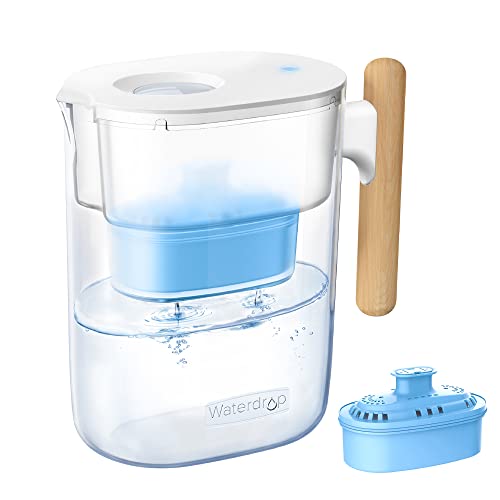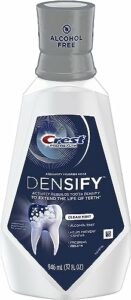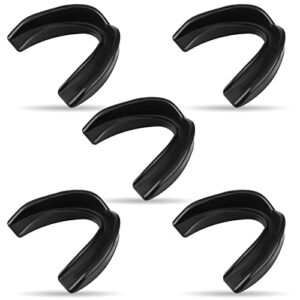We understand that maintaining a healthy diet can sometimes feel like a daunting task, especially when it comes to navigating the realm of acidic foods and drinks. It’s no secret that an excessive intake of acidity can have negative effects on our overall well-being, from digestive issues to dental problems. That’s why we’re here to offer our support and guidance with our top 10 tips for minimizing acidic foods and drinks in your diet. Our aim is to help you make informed choices and find balance in your eating habits, so you can enjoy a healthier and happier lifestyle. Let’s dive in!
Reducing Acidic Intake for Improved Health and Wellness
Understanding the Impact of Acidic Foods and Drinks
Our diet plays a crucial role in maintaining our overall health and well-being. While many foods and beverages can be enjoyed in moderation, it’s important to understand the impact that acidic foods and drinks can have on our bodies. In this blog section, we will delve into the effects of consuming acidic foods and drinks, discussing the potential risks and negative consequences that they can have on our health.
What are Acidic Foods and Drinks?
Before we explore the impact of acidic foods and drinks, it’s important to understand what they are. Acidic foods and drinks are those that have a low pH value, typically below 7. Some examples of acidic foods include citrus fruits (such as lemons and oranges), tomatoes, vinegar, and carbonated beverages like soda.
Effects on Tooth Enamel
One of the most significant impacts of consuming acidic foods and drinks is the erosion of tooth enamel. The high acidity in these substances can gradually wear down the protective layer of our teeth, leaving them vulnerable to decay and sensitivity. Here’s what happens when we consume acidic foods and drinks:
- Acidic substances soften the enamel, making it easier for bacteria to penetrate and cause cavities.
- Over time, the enamel can become thinner, leading to increased tooth sensitivity and a higher risk of tooth decay.
- The acid can also cause discoloration and dullness of our teeth, impacting our smile aesthetics.
Digestive Issues
Consuming too many acidic foods and drinks can also lead to digestive issues. The high acidity can disrupt the natural pH balance in our stomach, which is crucial for proper digestion. Here are some potential risks:
- Acid reflux: High acidity in the stomach can trigger acid reflux, leading to heartburn, chest pain, and discomfort.
- Gastritis: Excessive consumption of acidic foods and drinks can irritate the stomach lining, causing inflammation and gastritis.
- Indigestion: The increased acidity can slow down the digestion process, leading to feelings of bloating, discomfort, and indigestion.
Bone Health
Another aspect to consider is the impact of acidic foods and drinks on our bone health. When we consume acidic foods, our body tries to neutralize the acid by releasing calcium from our bones. Over time, this can lead to a decrease in bone density, increasing the risk of osteoporosis and fractures.
Maintaining a Balanced Diet
While it’s important to be aware of the potential risks of acidic foods and drinks, it’s also essential to maintain a balanced diet. Here are some tips to keep in mind:
- Moderation: Enjoy acidic foods and drinks in moderation, rather than consuming them excessively.
- Hydration: Drink plenty of water to help neutralize the acid and maintain a healthy pH balance in your body.
- Oral hygiene: Practice good oral hygiene, including regular brushing and flossing, to protect your tooth enamel.
- Calcium-rich foods: Include calcium-rich foods in your diet, such as dairy products, leafy greens, and fortified foods, to support bone health.
Identifying Acidic Foods and Drinks
If you’ve ever experienced heartburn, indigestion, or acid reflux, you may already be aware of the impact that acidic foods and drinks can have on your digestive system. By identifying and understanding which foods and beverages are acidic, you can make informed dietary choices to help reduce discomfort and promote better overall health. In this blog post, we will provide a comprehensive list of common acidic foods and drinks, along with an explanation of the factors that contribute to their acidity levels.
The pH Scale and Acidity Levels
Before we delve into the list of acidic foods and drinks, let’s briefly discuss the pH scale. The pH scale ranges from 0 to 14, with 7 being considered neutral. Anything below 7 is considered acidic, while values above 7 are alkaline or basic. The lower the pH value, the more acidic the substance is.
Factors Contributing to Acidity Levels
The acidity of foods and drinks can be influenced by various factors, including natural acidity, the presence of organic acids, and the impact of food processing. Here are some key factors that contribute to the acidity levels:
- Natural Acidity: Certain fruits and vegetables naturally contain acids. For example, citrus fruits like oranges and lemons are known for their high citric acid content, which contributes to their acidic nature.
- Organic Acids: Foods and drinks may contain organic acids that contribute to their acidity. Examples include malic acid in apples and grapes, tartaric acid in wine, and acetic acid in vinegar.
- Food Processing: The process of cooking, fermenting, or aging can also increase the acidity of certain foods and drinks. Examples include pickled vegetables, fermented foods like sauerkraut, and aged cheeses.
Common Acidic Foods and Drinks
Now, let’s take a look at a comprehensive list of common acidic foods and drinks that you should be aware of:
Acidic Foods:
- Citrus fruits (lemons, oranges, grapefruits)
- Tomatoes and tomato-based products (sauces, ketchup)
- Pineapple
- Berries (strawberries, blueberries, raspberries)
- Apples
- Grapes
- Cranberries
- Rhubarb
- Pickled vegetables (pickles, sauerkraut)
- Fermented foods (yogurt, kefir, kimchi)
- Aged cheeses
Acidic Drinks:
- Coffee
- Tea (especially black and green tea)
- Carbonated beverages (sodas, energy drinks)
- Alcoholic beverages (wine, beer, spirits)
- Fruit juices (orange juice, grapefruit juice)
- Energy drinks
Making Informed Choices
While it may not be practical or desirable to completely eliminate acidic foods and drinks from your diet, being aware of their acidity levels can help you make informed choices. Here are a few tips to consider:
- Balance your diet: Include a variety of foods from different food groups to maintain a well-rounded diet.
- Moderation is key: Enjoy acidic foods and drinks in moderation to minimize their impact on your digestive system.
- Pair with alkaline foods: Counterbalance the acidity by incorporating alkaline foods such as leafy greens, nuts, and whole grains into your meals.
- Pay attention to portion sizes: Be mindful of the quantity of acidic foods and drinks you consume in one sitting.
Remember, everyone’s tolerance to acidic foods and drinks can vary, so it’s important to listen to your body and make choices that work best for you. By understanding and managing your intake of acidic foods and drinks, you can take steps towards maintaining a healthy digestive system and overall well-being.
Note: The information provided in this blog post is for informational purposes only and should not replace professional medical advice. If you have specific health concerns or conditions, consult with a healthcare professional for personalized guidance.
Tips for Minimizing Acidic Foods and Drinks
Maintaining a balanced diet is essential for our overall health and well-being. While some acidic foods and drinks can be enjoyed in moderation, excessive consumption can lead to various health issues such as acid reflux, tooth erosion, and digestive problems. If you’re looking to reduce your intake of acidic foods and drinks, we’ve compiled some practical tips and strategies to help you make healthier choices.
1. Know the Acidic Culprits
Before you can make changes to your diet, it’s important to be aware of which foods and drinks are high in acidity. Some common acidic foods and drinks include:
- Citrus fruits (lemons, oranges, grapefruits)
- Tomatoes and tomato-based products
- Carbonated beverages (sodas, sparkling water)
- Coffee and tea
- Alcoholic beverages
- Vinegar and pickled foods
- Processed meats (sausages, bacon)
2. Gradual Reduction
Making sudden drastic changes to your diet can be challenging and unsustainable. Instead, aim for a gradual reduction in your consumption of acidic foods and drinks. Start by identifying the highest acidic items in your diet and focus on reducing those first.
3. Healthy Substitutions
To help you minimize acidic intake, consider the following healthier alternatives:
- Replace acidic fruits like lemons and grapefruits with low-acid options such as berries, melons, and apples.
- Opt for herbal teas or naturally caffeine-free alternatives like chamomile or peppermint tea instead of acidic coffee or regular tea.
- Swap carbonated sodas with infused water or unsweetened herbal teas for a refreshing alternative.
- Choose lean meats, poultry, or fish instead of processed meats, which tend to be high in acidity.
4. Mindful Meal Planning
Taking a strategic approach to meal planning can greatly assist in reducing acidic foods and drinks in your daily diet. Here are a few tips:
- Incorporate more alkaline-rich foods, such as leafy greens, broccoli, cucumbers, and avocados, into your meals.
- Balance acidic foods with alkaline foods to neutralize their effects. For example, if you’re having a tomato-based pasta sauce, add some spinach or kale to reduce acidity.
- Be mindful of portion sizes. Overconsumption of acidic foods can amplify their negative impact, so aim for moderation.
5. Read Labels
When grocery shopping, make it a habit to read food labels. Pay attention to ingredients and nutritional information to identify acidic additives or high-acid products. Look for alternatives that are less acidic or have lower acidity levels.
6. Dental Hygiene
Reducing your intake of acidic foods and drinks is not only beneficial for your overall health but also for your dental hygiene. Acidic foods can erode tooth enamel, leading to tooth sensitivity and cavities. To protect your teeth:
- Rinse your mouth with water after consuming acidic foods or drinks to help neutralize the acidity.
- Wait at least 30 minutes before brushing your teeth after consuming acidic items, as brushing immediately can damage softened enamel.
Balancing Acidic and Alkaline Foods: Achieving a Healthier You
Maintaining a balanced diet is essential for overall health and well-being. The foods we consume play a vital role in determining our body’s acidity or alkalinity levels. While some foods are naturally acidic, others are alkaline. Striking the right balance between these two is crucial for our bodies to function optimally. In this blog section, we will delve into the importance of maintaining this delicate balance and explore the role of alkaline foods in neutralizing the effects of acidic foods and drinks.
The Importance of a Balanced Diet
Eating a balanced diet is not just a fad; it is a fundamental aspect of leading a healthy lifestyle. A well-rounded diet ensures that our bodies receive the necessary nutrients, vitamins, and minerals to function efficiently. Moreover, it helps maintain a proper pH balance within our bodies, which is vital for various bodily functions.
Understanding Acidic and Alkaline Foods
Before diving into the specifics of balancing acidic and alkaline foods, let’s briefly understand what these terms mean. When we refer to the acidity or alkalinity of foods, we are talking about their potential impact on the body’s pH levels.
- Acidic Foods: These are foods that have a low pH level, typically ranging from 0 to 6.9. Examples include citrus fruits, processed meats, dairy products, and carbonated beverages.
- Alkaline Foods: Conversely, alkaline foods have a higher pH level, generally between 7.1 and 14. These include leafy greens, nuts, seeds, and certain fruits and vegetables.
The Role of Alkaline Foods in Neutralizing Acidity
Consuming excessive amounts of acidic foods and drinks can throw our body’s pH balance off-kilter, leading to various health issues. However, by incorporating alkaline foods into our diet, we can counteract this acidity and promote a healthier internal environment. Here’s how alkaline foods help neutralize acidity:
- Restoring pH Balance: Alkaline foods have an inherent ability to neutralize excess acidity in our bodies, helping restore the ideal pH balance. This balance is crucial for optimal cellular function, immune support, and overall well-being.
- Reducing Inflammation: Acidic environments in the body are often associated with inflammation. By consuming alkaline foods, we can help reduce inflammation and its negative impact on our health.
- Boosting Bone Health: When our bodies become too acidic, they may draw calcium from our bones to restore the pH balance, potentially leading to weakened bones over time. Alkaline foods rich in minerals like calcium help counteract this effect and promote stronger bone health.
Balancing Acidic and Alkaline Foods: Practical Tips
Now that we understand the importance of balancing acidic and alkaline foods, let’s explore some practical tips to achieve this equilibrium:
- Incorporate a variety of fresh fruits and vegetables into your daily meals, with a particular focus on alkaline options like leafy greens, cucumbers, avocados, and bell peppers.
- Opt for whole grains, nuts, and seeds, which are alkaline in nature and provide essential nutrients.
- Reduce your consumption of highly acidic foods and drinks such as processed meats, sugary snacks, alcohol, and carbonated beverages.
- Stay hydrated by drinking plenty of water, which helps maintain a healthy pH balance in the body.
Taking Steps Towards a More Alkaline Diet
In conclusion, we have discussed the top 10 tips for minimizing acidic foods and drinks in your diet. By following these guidelines, you can take proactive steps to protect your teeth, digestive system, and overall health. It is important to remember that everyone’s dietary needs and preferences are different, so it’s essential to consider factors such as personal health conditions, taste preferences, and lifestyle when making choices about what to eat and drink. We recommend consulting with a healthcare professional or registered dietitian to create a plan that suits your individual needs. Ultimately, the key is to be mindful of your diet and make conscious choices that promote better health and well-being. By doing so, you can take control of your nutrition and enjoy a balanced and nourishing diet.




















